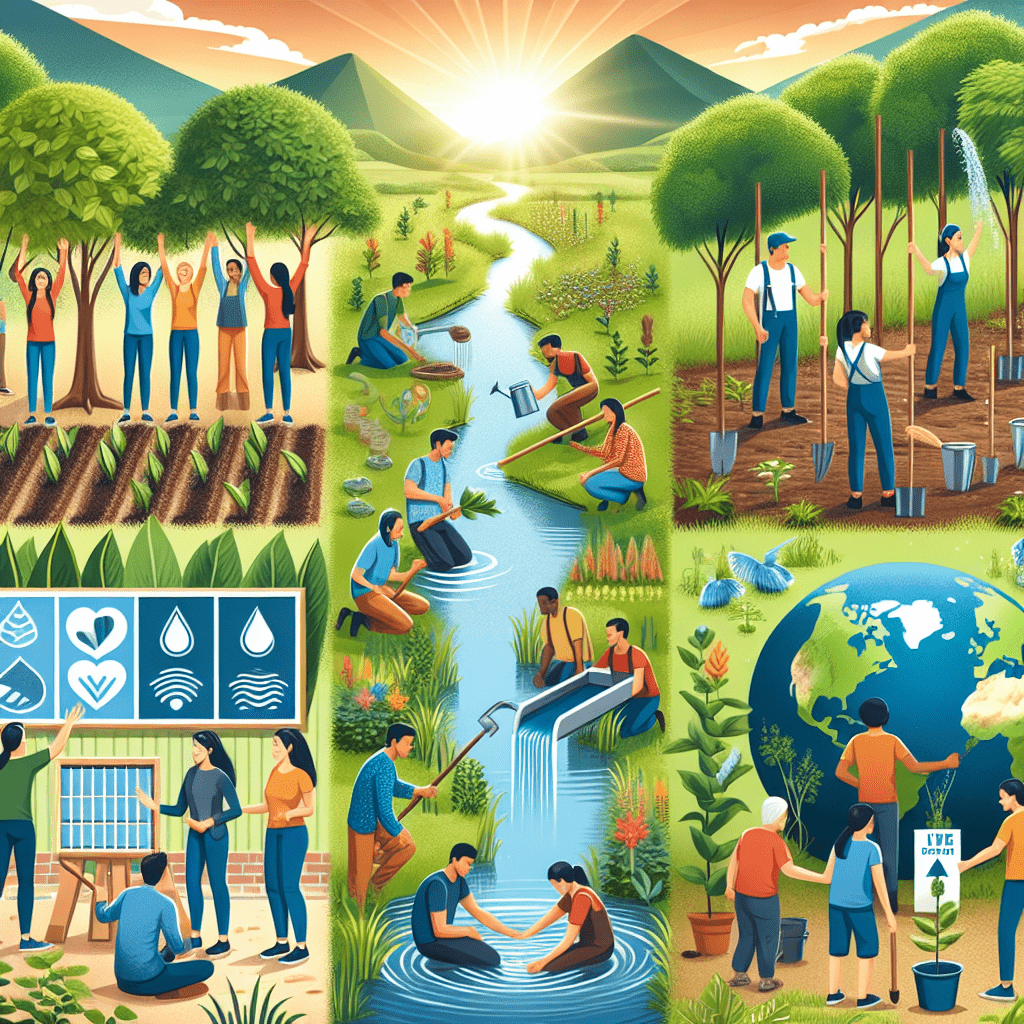Revitalizing Communities Through Water Conservation Projects

Introduction to Water Conservation and Community Revitalization
Water is the lifeblood of communities around the world, playing a critical role in sustaining life, supporting agriculture, and fostering economic growth. However, with the increasing challenges of water scarcity and environmental degradation, the importance of water conservation has never been more pronounced. This article explores how community-led water conservation projects are not only safeguarding this precious resource but also bringing about significant socio-economic benefits, revitalizing communities in the process.
Strengthening Community Bonds
Community-led water conservation initiatives often require a collaborative approach, bringing together individuals, local organizations, and sometimes, governmental bodies. This collaborative effort can strengthen community bonds, as people unite with a common purpose. Success stories from around the globe demonstrate how such projects can enhance social cohesion, empowering communities to tackle other challenges collectively.
Boosting Local Economies
Water conservation projects can also have a profound impact on local economies. By ensuring a sustainable water supply, communities can secure agriculture, support local industries, and attract new investments. Projects that involve the construction of rainwater harvesting systems, for instance, not only provide employment during the building phase but also ensure long-term economic benefits through improved water availability.
Case Study: The Rajendra Singh Water Conservation Movement in Rajasthan, India
In the semi-arid region of Rajasthan, India, Rajendra Singh, known as the "Waterman of India," spearheaded a movement that revitalized several communities. Through the construction of traditional rainwater storage tanks, called johads, Singh and his team were able to replenish local aquifers, restore rivers, and bring life back to a land that was once considered barren. This initiative not only improved water availability but also led to increased agricultural productivity, bolstering the local economy and reducing migration from rural areas.
The Ripple Effect of Community Engagement
Community-led water conservation projects often lead to a ripple effect, inspiring neighboring communities and regions to undertake similar efforts. The success of one project can serve as a model, demonstrating the tangible benefits of water conservation and how community action can lead to significant environmental and socio-economic improvements.
Enhancing Food Security and Reducing Poverty
At the heart of water conservation efforts is the potential to enhance food security and reduce poverty. Sustainable water management practices allow communities to grow more food, support livestock, and diversify income sources. This is especially crucial in areas where water scarcity poses a significant threat to agriculture, the primary livelihood for many.
Conclusion and Reflecting on the FutureCommunity-led water conservation initiatives are proving to be a powerful tool for revitalizing communities, demonstrating that sustainable water management is not only about preserving a vital resource but also about building stronger, more resilient societies. As we look to the future, the continued support and scaling of such projects remain essential for sustainable development and the well-being of communities worldwide.
"Water is the mirror of nature." - Leonardo da Vinci
This concluding thought, attributed to Leonardo da Vinci, captures the essence of water conservation and its importance. By reflecting on nature and our role within it, community-led conservation projects not only protect our environment but also pave the way for a sustainable and prosperous future for all members of the community.



